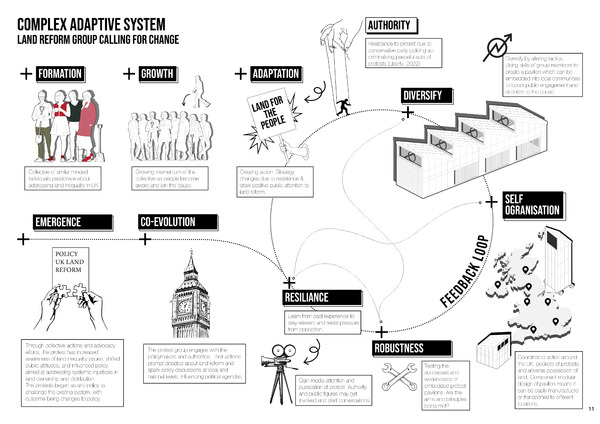An Englishman's Castle: Calling for Land Reform!
An Englishman’s home is his Castle, proverb highlighting the pride associated with property ownership. Emphasising the home as a place of sanctuary and protection, where a landowner has complete autonomy and control over their property.
Following an investigation into land ownership structures it became clear that major landowner’s control of how their land is used and developed has an impact on local people’s autonomy and access to land. Local people are removed from development decisions in their area by top-down design approaches and the presence of major landowners. Land Reform may hold the answer in a move towards development which is beneficial to a collective, rather than wealthy landowners.
This thesis questions major landownership in the UK and the control these individuals and corporations have on the built and natural environment. The project sits in a middle ground between existing ownership structures and a move towards more equal cooperative landownership.
Through the lens of a theoretical Land Reform group, the project uses architecture as a vehicle for protest. The series of pavilions have been designed using components which can be easily constructed, disassembled and relocated to new locations. Allowing the protest group to temporarily occupy parcels of land through adverse possession tactics. Attacking the issue at a local scale by embedding the pavilions temporarily into towns across the UK. The pavilions are disruptive, sitting in tension between the historic context of Appleby and opposing existing landownership structures. However, they have been designed to leave as little impact as possible on the land and are temporary interventions which can easily be removed. The contrasting appearance of the pavilions was a design decision to generate attention, the metal structures are not of their place, with the aim of engaging local people with the land reform group.


